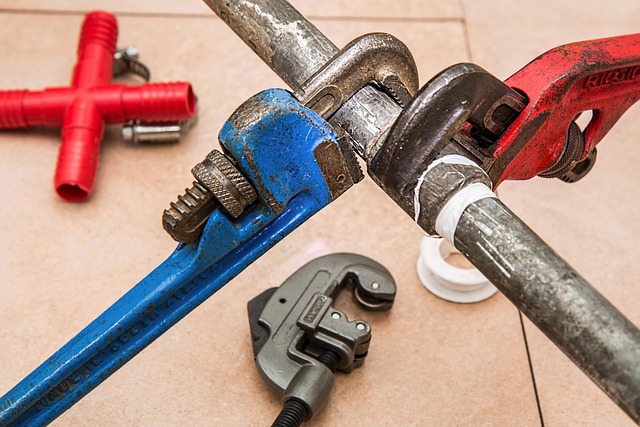Cracked stem walls require immediate attention to prevent structural damage. The repair process involves meticulous inspection, preparation, patching with high-strength mortar, and blending for seamless integration. Using specialized injection foam fills fine cracks, preventing moisture intrusion. Regular inspections and prompt repairs extend wall lifespan. Avoid subpar materials or techniques; seek professional advice. After structural repair, restore aesthetics with matched stucco/drywall and repainting for enhanced property value and design appeal.
Cracked walls, whether in residential or commercial spaces, not only mar the aesthetic appeal but also signal structural integrity issues. Understanding the causes of cracks is pivotal for effective stem wall repair. This article delves into the root causes, offers a comprehensive guide on materials and tools, details the step-by-step process, and highlights techniques for longevity. We also dispel common mistakes to avoid and share tips on restoring the wall’s aesthetic appeal after the fix, focusing on stem wall repair solutions.
Understanding Cracked Wall Causes

Cracked walls can be a common sight in both residential and commercial buildings, often leading homeowners and property managers to wonder how best to restore them. Understanding the causes behind these cracks is essential for effective restoration and preventing future damage. In many cases, cracks appear due to issues with the stem wall—a critical structural element that supports the building’s foundation. Stem wall repair becomes necessary when this initial construction fails, leading to shifts in the building’s framework over time.
Various factors contribute to stem wall degradation, including settlement or shifting of the soil beneath the structure, inadequate original construction, and exposure to extreme weather conditions like heavy rains or frost. Once a crack forms in the stem wall, it can expand and deepen, compromising the overall stability of the building if left unaddressed. Prompt identification of these issues allows for targeted repairs, ensuring longevity and structural integrity.
Materials and Tools for Repair

Restoring a cracked stem wall involves a careful selection of materials and tools tailored to match the existing structure’s integrity. For repairs, professionals often opt for high-quality mortar mixes designed specifically for stem wall construction. These blends are formulated to withstand environmental factors and ensure long-lasting durability. When choosing tools, a mix of traditional trowels, brushes, and specialized hand tools is ideal. Trowels help in applying the mortar accurately, while brushes clean away loose debris and prepare the surface. Hand tools like chisels and hammers come in handy for removing broken sections and creating precise shapes during the repair process.
Additionally, it’s crucial to have a supply of matching bricks or stones to replace any missing or damaged components. Ensuring these materials align with the wall’s aesthetic is key to maintaining its original charm. Proper preparation of the stem wall before application of new mortar is paramount, involving meticulous cleaning and patching to create an even surface. This meticulous approach guarantees that the restored wall not only looks authentic but also provides structural stability, ensuring longevity against future cracks or damage.
Step-by-Step Stem Wall Repair Process

Cracked stem wall repair is a meticulous process that requires careful assessment and precise techniques. Here’s a breakdown of the typical step-by-step approach:
1. Inspection: Begin by thoroughly inspecting the damaged area to identify the extent of the cracks. Note their depth, width, and pattern. This step is crucial as it determines the repair methodology.
2. Preparation: Clear the crack area of any loose debris or existing mortar. Use a chisel and hammer to carefully clean the surface, ensuring that the new materials will adhere properly.
3. Patching: Mix a suitable mortar compound, often a special high-strength mix designed for stem wall repairs. Apply the compound to fill the crack, using a trowel to ensure complete coverage and smooth out any excess.
4. Finishing: Allow the patch to dry completely, then use a damp cloth to blend it with the surrounding stem wall for a seamless finish. This step ensures that the repaired area is not visually distinct from the rest of the structure.
Techniques to Ensure Longevity of Repairs

After repairing cracks in walls, implementing certain techniques can significantly extend the lifespan of the restoration work. One crucial method is using specialized injection foam for stem wall repair. This technique fills fine cracks and gaps, preventing further damage caused by moisture intrusion and settling. By ensuring these repairs are properly sealed, you create a solid foundation for long-term durability.
Additionally, regular maintenance plays a vital role in longevity. Inspection at least once a year can help identify new cracks or signs of water damage early on. Addressing issues promptly through stem wall repair techniques will prevent the need for more extensive and costly renovations in the future.
Common Mistakes to Avoid During Restoration

When restoring cracked walls, especially those involving stem wall repair, homeowners and contractors alike should be aware of common pitfalls to ensure optimal results. One of the biggest mistakes is attempting a quick fix without properly assessing the extent of the damage. Cracks might appear superficial but could indicate more significant structural issues that require comprehensive attention.
Another error is using the wrong materials or techniques. Using subpar products or improper methods can lead to further deterioration and an unsightly finish. Always opt for high-quality, durable restoration materials suitable for stem wall repair, and consider seeking professional advice to ensure a long-lasting, structurally sound solution.
Restoring Aesthetic Appeal After Fixing Cracks

After successfully repairing cracks in stem walls using appropriate techniques like injection molding or mesh reinforcement, it’s time to restore the aesthetic appeal of the space. This involves careful consideration of the original design and texture to ensure a seamless blend with the surrounding areas. Professionals often use matching stucco or drywall compounds to fill in the repaired sections, blending them seamlessly with the existing wall. For an even more refined look, repainting with colors that complement the overall decor can revive the space, making it appear as good as new.
The process of restoring aesthetic appeal is not just about fixing visual imperfections; it’s also about enhancing the overall ambiance and value of the property. A well-restored wall can transform a room, creating a harmonious environment that was once marred by cracks. This attention to detail ensures that the stem walls not only function effectively but also contribute positively to the interior design, making them a focal point rather than an eyesore.
